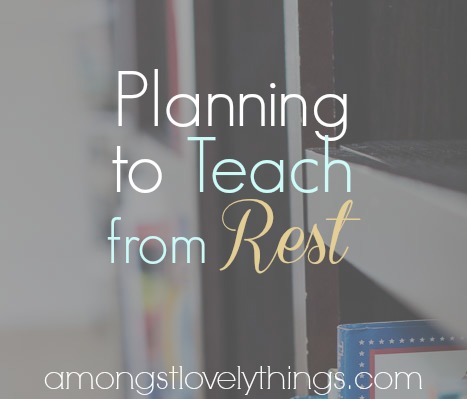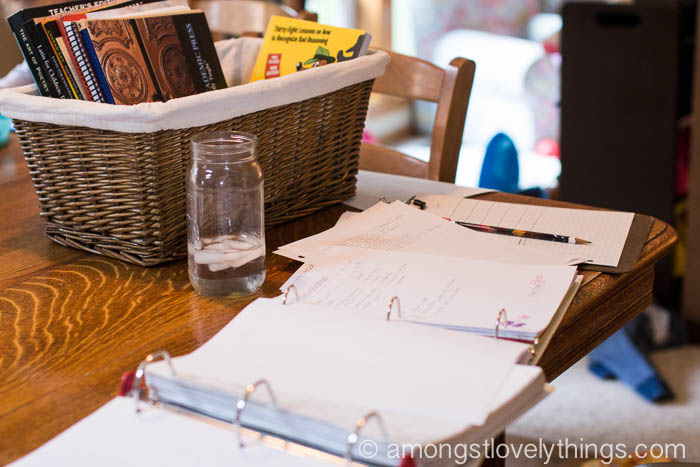I’m always just a bit hesitant to post our next year’s homeschooling plans. I never end up doing all that I set out to do, and I hate to think that someone would worry and wonder how we got to it all. Here’s the deal: we don’t. Ever.
I’m sharing my process anyway, because I know we’re all hungry to peek into one another’s planning notebooks at this time of year.
The posts in this series:
- Planning to Teach from Rest (that’s what you’re reading now)
- Taking a Birds’ Eye View
- First Things
- Morning Time Plans
- Loop Scheduling
- Planning is Just Guessing
The biggest problem I have with planning to use published curriculum resources is that they are all written for an entire school year, as if we need to do every subject all year long.
That grates on me, because I’m quite sure it’s why so many of us think we need to do spelling AND writing AND grammar AND vocabulary AND foreign language AND AND AND every day, all year long.
No wonder we struggle to teach from rest.
A lot of folks suggest building your plan by looking through a book to see how many chapters or pages there are and then dividing that number by how many weeks of school you have.
I don’t do that.
I want to start with my child and with my reality (I don’t have time to do every subject all year long- and that’s a fact).
I’m not teaching the curriculum, I’m teaching a person.
My goal is not to get through the book, but rather to encounter ideas, master skills, and make progress in a way that ensures gains are made by the end of the year.
I actually ignore how many chapters there are, at least at the beginning.
First I look at what I want to teach my child (for example, math) and how much time I can give to that subject- then I look at my resource and plug in the chapters.
This means that it often takes us more time to get through what other homeschoolers try to cram into a single year. But it works because:
- Who actually finishes according to their plan when their plan isn’t reasonable?
- The best curriculum is the one you actually teach, not the one you plan.

In many subject areas I’m teaching to mastery, so we only move on when we know that we know that we know the material.
I’m not teaching according to the book’s timetable, because my child as a person trumps the book as a… well… book.
Yes, we could anxiously fly through all of Saxon 7/6 in one year. But if I’m letting the schedule and the breakdown of chapters dictate what we do every day, I’m going to necessarily gloss over things in order to “keep up.”
If I’m teaching my child first and letting the curriculum serve me, however, then we master each concept slowly and carefully before moving on, and we actually learn a lot that way.
It’s what I meant when I said a key to simplifying the curriculum is to do less.
I often use Pam’s planning sheets to help me get organized. They are digitally editable so that you can actually type right into them, but for some reason I like handwriting mine.
Something about writing out things like this helps me make connections and really wrap my mind around how everything is going to work.
Here’s an overview of a weekly plan that worked for me once upon a time (this isn’t our current schedule):

This was our weekly overview when my kids were 13, 11, 9, 2, and the twins were 1. True story. I even lived to tell about it.
Weren’t they cute?

They were hard too, believe me. ;)
I like to begin with an intention to teach from rest, to remember that I’m teaching a child (not a book), and that no one knows just how quickly my child will move through the material as we go.
It helps to start there, at any rate. After that, I move on to taking a bird’s eye view.
The posts in this series:
- Planning to Teach from Rest (that’s what you’re reading now)
- Taking a Birds’ Eye View
- First Things
- Morning Time Plans
- Loop Scheduling
- Planning is Just Guessing



